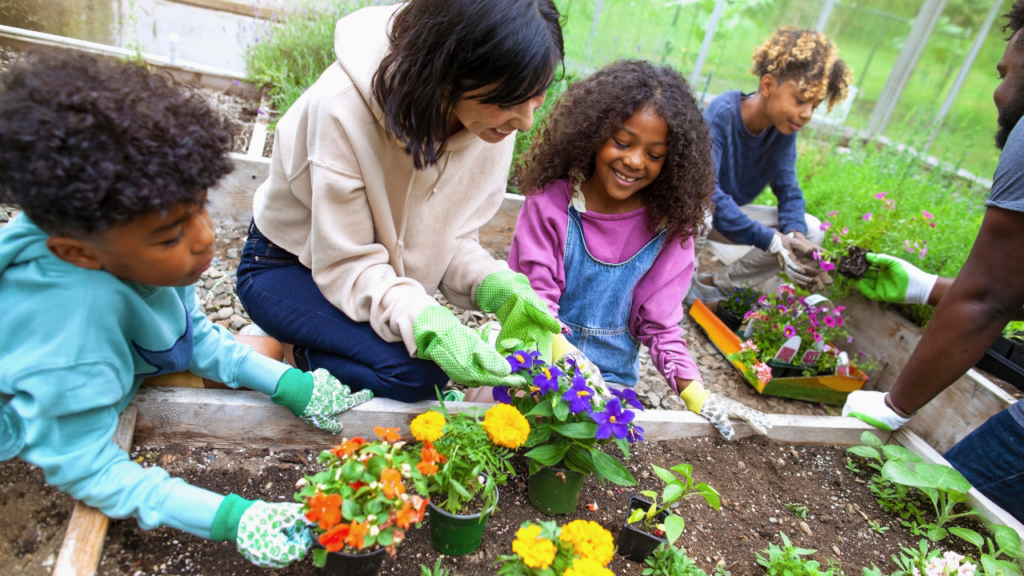As the school year kicks off, it’s a season of new beginnings. Just like the changing leaves and the promise of fresh growth, this is the time when we all have the chance to sow the seeds of something truly beautiful—friendship. Whether you’re a student moving to he next grade, a teacher creating a nurturing classroom, or a parent supporting your child’s social growth, the process of making friends is like tending a garden. Join me in exploring the power of these “friendship seeds” and how they can bloom into meaningful connections.
Planting Friendship Seeds
Imagine friendship seeds as the small but potent gestures that let others know you’re interested in getting to know them. Just like a gardener selects the perfect spot and soil for their seeds, we too can cultivate the conditions for friendship to grow. Here are some essential friendship seeds to plant:
- Friendly Body Language – Just like a smile, our body language speaks volumes. Keep your head up and make eye contact. It’s an invitation for others to approach, knowing they’ll be met with warmth and openness.
- Greeting People – A simple “hello” can do wonders. It’s a small yet powerful way to let someone know they’re seen and valued. And don’t forget to respond when someone greets you—it’s a mutual nurturing of the friendship soil.
- Asking Questions – Like watering a plant, asking questions helps relationships flourish. Inquire about someone’s interests, like favorite games, books, or what makes them happy. You might be surprised to learn how many things you have in common. And those shared interests may take root and grow into strong friendships.
Nurturing the Seedlings
Remember, making friends isn’t always quick. It takes time for friendships to grow. When you are getting to know new people, it is natural to feel a mix of excitement and nervousness. In fact, people of all ages experience these emotions when stepping into new social circles. But here’s the magic—when you scatter those tiny friendship seeds, they start to sprout and grow, forming the foundation of beautiful friendships. It takes patience and time, just like watching a plant grow from a tiny seed into a blooming wonder.
Watch the “Growing Friendships” Lesson on YouTube
Now that you understand the concept of friendship seeds, I invite you to join our engaging YouTube lesson on “Growing Friendships.” In this video, we use an analogy, comparing the process of making friends to the growth of plants. It’s a relatable way to help students, teachers, and parents understand the magic of friendship. Together, we can create a nurturing environment where the seeds of connection flourish. Click the link below to watch the video and embark on this exciting friendship-building journey:
Looking for books on friendship skills? Here are some of our favorites:

Fox Makes Friends “You can’t catch friends, you have to MAKE friends!” explains Fox’s mother. So Fox sets out to make friends in a very literal way. When some forest animals jump in to lend a hand, Fox learns the true meaning of friendship. This is a great book for discussing how friendships are formed. I use it to teach social initiation skills with kindergarteners.
The Green Zone Conversation Book The target audience is children with Autism, but honestly, this book can benefit any child who struggles with communication skills. The Green Zone is all about finding shared interests and engaging in conversation. Filled with helpful illustrations, learning activities, engaging games, and reproducible resources. Perfect for individual or small group social skills practice . . . includes clear “how-to” directions for adults.
Circles All Around Us This is a heartwarming tale about the journey of a circle. At the beginning of our lives, our circle is small, but as we grow and connect with others, it expands to embrace family, friends, neighbors, our community, and more. This beautiful picture book encourages conversations about the importance of kindness and inclusivity in expanding our horizons, even when it might feel daunting. A gem to use at the start of the school year or to inspire your classroom community.
How to Make a Friend Have you ever thought about having a guidebook for making friends? In this imaginative story, a creative young individual decides to build a robot to become her friend, following each friendship step carefully. It seems straightforward, right? But life has its surprises, and the girl realizes that her new friend has a mischievous side, causing chaos, resulting in her need to reevaluate their friendship. This humorous and smart adventure reminds us that sometimes friendships take unexpected twists, and the results can be truly heartwarming.
Scaredy Squirrel Makes a Friend This book in the series features our favorite nutty hero as he sets out to make a friend. Scaredy finds that friendship is well worth the risks – even if his new bestie is a messy dog! A great story for teaching social initiation skills! Even the shyest of the group will relate to Scaredy Squirrel.
How to Be a Friend: A Guide to Making Friends and Keeping Them This book is an engaging and educational resource that equips children with the skills and knowledge to foster meaningful friendships, navigate the ups and downs of social interactions, and build strong connections with those around them. With the lovable dinosaur characters as guides, children will embark on a journey of friendship, discovery, and valuable life lessons.
A Little SPOT Makes Friends: A Story About Friendship Another terrific Little Spot book! This one has a lot of helpful ideas for kids wanting to make new friends and how to be a great friend too! Very helpful for the start of school and the back-to-school jitters that come with it!
A Friend for Henry A young boy with autism is on a quest to find a new friend. A friend who shares. A friend who listens. Maybe even a friend who likes things to stay the same and all in order, as Henry does. This book offers a compassionate and inclusive look at friendship, highlighting the importance of understanding and accepting each other’s differences.


